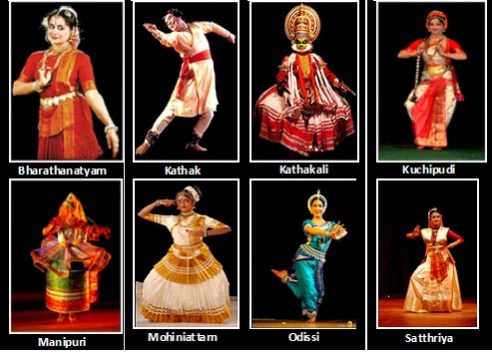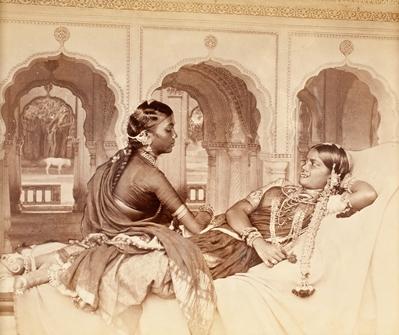Role of Indian classical dance in education

By Rimli Bhattacharya
‘Indian classical dance’ is an umbrella term used for various performance arts rooted in religious Hindu musical theatre styles, whose theory and practice can be traced to the Sanskrit text, Natya Shastra.
The number of recognized classical dances range from eight to more, depending on the source and scholar. The Sangeet Natak Academy recognizes eight – Kathak from North India, Manipuri from the North East, Odissi from Orissa, Kuchipudi from Andhra Pradesh, Bharatanatyam from Tamil Nadu, and Kathakali and Mohiniattam from Kerala. These dances are traditionally regional; all of them include music and recitation in local language or Sanskrit. They represent a unity of core ideas in a diversity of styles, costumes, and expression.

The Natya Shastra is the foundational treatise for classical dances of India, and this text is attributed to the ancient scholar, Bharat Muni.
Indian classical dance ought to be part of our school activities. This art form is not only the quintessence of sweetness, beauty, and power of our culture, but it is also a prayer and meditation, attracting divine blessings, happiness, and peace of mind.
To counterbalance today’s tough competition and the need to acquire best marks in school, in spite of a difficult curriculum, dance froms could play a very important role. They soothe and relax the minds of over-stressed school children and, at the same time, they educate the children and stimulate their concentration and creativity.
Dance is a form of vibration of our body and mind. It is a form of worship through which a dancer can reach the Almighty. A dancer can only reach this stage through continuous training and hard work. The child who wants to learn dance, the first thing s/he has to do is undergo hard training in order to learn discipline and patience, which are the most important factors in a child’s life.
With the movements in dance, the child gains physical fitness and retains control over the body. It’s also a mode of expression of inner feelings, helping to develop self-belief and self-confidence. Since Indian classical dance is based on mythology, it teaches children the value of the rich literary and cultural heritage of India.
It has been said, “Science is curiosity about life, art is wonder at life, philosophy is an attitude towards life, and religion is reverence for life.” A rich culture includes these four aspects. It is therefore obvious that aesthetic education is as essential, if not more, as intellectual or physical education. A complete or balanced human being will remain an illusion unless his emotions are trained, developed, and sublimated. That is why we need to introduce art in our educational curriculum as a compulsory subject. Classical dance is one of the highest forms of art.
The different classical dance styles were practiced and perfected in different parts of the country, even in times of social and political upheavals. In most places, dance was performed by young girls called Devadasis (servants of God) in temples as the highest form of worship to God. These Devadasis were dedicated to a particular temple and a particular God. This dance form was considered to be sacred. Since the colonial rulers did not see such dance forms as a mode of education or moral tradition, they banned such practices. The temple dance form started dying a slow death. Apparently by the 20th century, we were left with only a shadow of what had once existed as a vibrant form.

A recent and renewed interest in our dance forms in the last 50 years or so has helped to develop the current styles. A lot of the glories of the past traditions have been uncovered. The contemporary styles of these ancient forms are recreations of these discoveries. While the contemporary dance forms are performed outside the traditional milieu, they try to recreate the past. New themes are infused within the technique of the old styles and sometimes the ancient themes are presented in a new form and technique.
The development of human emotions has not received the desired attention in our educational institutions. One could say that the present deadlock in world affairs is to a large extent due to the lop-sided development of human personality. Emphasis is laid on cerebral development, while the heart is allowed to starve. It is this over-development of the head at the expense of the heart that underpins the psychological basis for our modern problems. If we had allowed a balanced development of the head and the heart, human nature would have developed certain fundamental moral values, solving much of our present global crisis.
Today when moral values decline and violence increases, it is the duty of the dancer to create an atmosphere of peace through her dance and the deep spiritual dedication that accompanies any performer of the classical dance style. After all, following the logic of mythologies, Brahma created this audio-visual art form to check the moral deterioration in the world.
Each nation has a soul of its own, which tries to express itself in several modes of thought and activity. In one sense, we are cells in that bigger organism. The culture of an eastern nation differs in several essential points from that of a western nation. There are some distinctive features about Indian classical dance which distinguish it from other dances of the world. And if our youth are to be trained to be channels for the expression of our national consciousness, the training of dance we impart to them must be truly national, truly Indian in spirit.
There is nothing to prevent an Indian from admiring or learning foreign dance forms, but then s/he ought to learn Indian classical dance first for an understanding of our cultural traditions.
Bio:
Rimli Bhattacharya is a First class gold medalist in Mechanical Engineering from National Institute of Technology. She obtained an MBA in supply chain management and is engaged in the corporate sector. Her essay on mental health was published in the anthology, A Book of Light, edited by Jerry Pinto (for Speaking Tiger Books, 2016). She has written for several magazines and newspapers – Times of India, Engineering Journals, and other blogs. Rimli is a trained Indian classical dancer, based out of Mumbai, India.
***
Like Cafe Dissensus on Facebook. Follow Cafe Dissensus on Twitter.
Cafe Dissensus Everyday is the blog of Cafe Dissensus magazine, based in New York City, USA. All materials on the site are protected under Creative Commons License.
***
Read the latest issue of Cafe Dissensus Magazine on ‘Narrating Care: Disability and Interdependence in the Indian Context’, edited by Nandini Ghosh, IDSK, Kolkata, India and Shilpaa Anand, MANUU, Hyderabad, India.
6 Responses to “Role of Indian classical dance in education”
Bharatanatyam as it manifests today is repackaging of the Sadir Nrtya by Rukmini Devi Arundale. Traditionally what is today called as Bharatnatyam is not rooted just in TamilNadu but is in Karnataka too. The Thanjavur style, which is more geometrically angular was popularized by the Thanjavur quadret.. and their disciples Sudha Raghuraman being a major personality. While the Mysore school is more flowy and in line with Mohiniattam. — Bharatnatyam as it is called today is an off shoot of Ekaharya padatti of the Natyashastra described by Bharata Muni.
The Devadasi padatti is again a later manifestation of the Nagara Nati, While Nrtya is part of chatushashti kala. In case you need any more information please do feel free to ask.
I teach Natyashastra and am a vidwat in Bharatnatyam with international paper presentations on the topic hence my sense of authority.
My apologies if I am treading on anyone’s toes.
Not at all ma’am, in fact I am happy to know about these facts, my respect to you
Dance is reallly important
Dance is my life
Reblogged this on Rimlismusings.